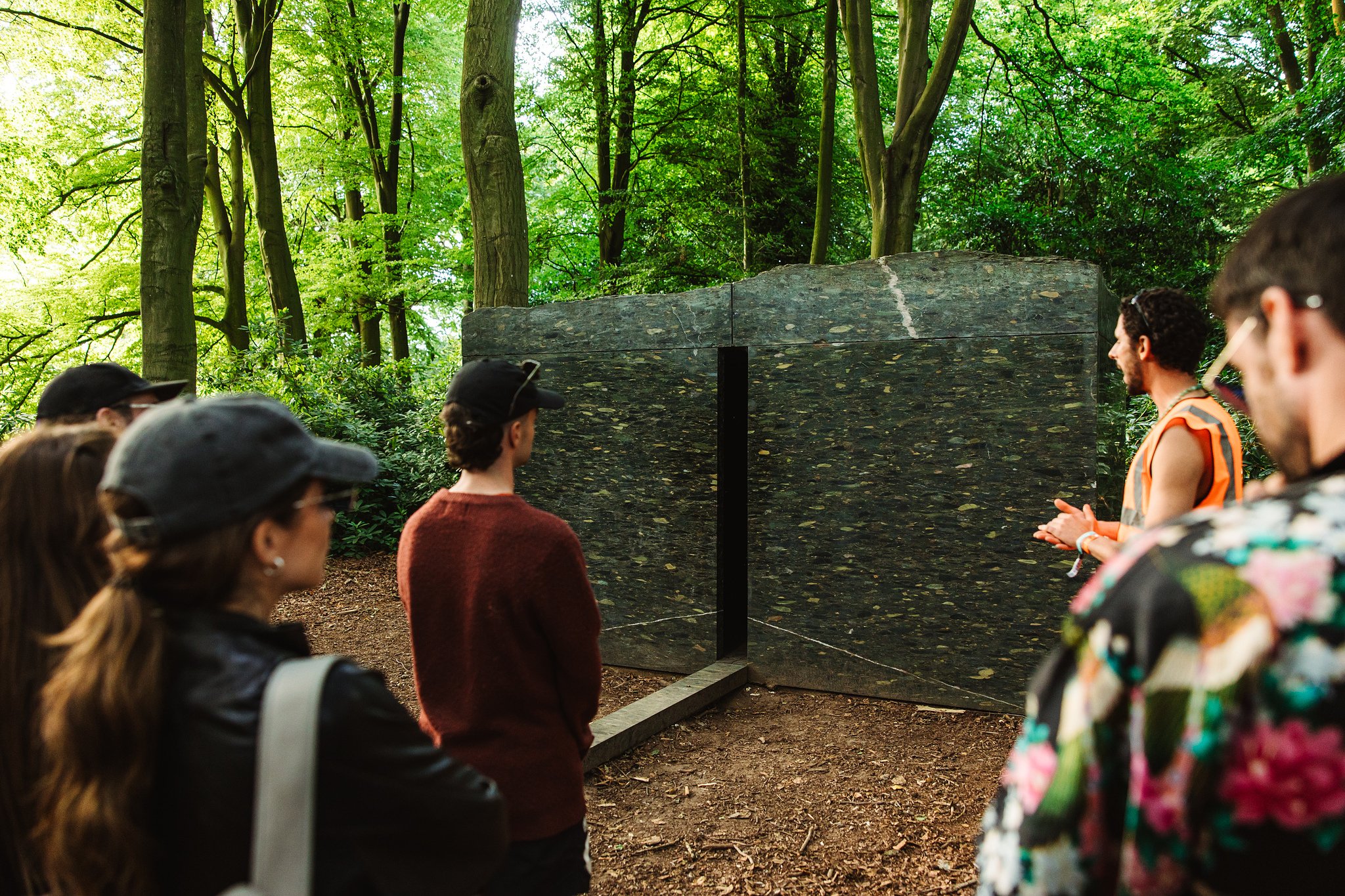Prada Mode, Osaka
Courtesy of Prada
text by Andrea Riano
At a time when fashion’s cultural events are so often reduced to surface-level branding, Prada Mode’s second edition in Japan is a serious meditation on how architecture can reimagine the ecosystem of an island. In the heart of Osaka, the brand collaborates with architect Kazuyo Sejima, inviting guests to participate in a critical dialogue, exclusive performances, and an immersive exhibition.
Open to the public through June 15th, Prada Mode Osaka takes place in Umekita Park, a rare oasis nestled between Osaka’s glass towers and directly connected to the country’s busiest train station. This is the twelfth edition of the brand’s cultural journey, which has landed everywhere from Miami to Hong Kong and now, for the second time, in Japan. This particular edition is curated by Pritzker Prize-winning architect and head of SANAA, Kazuyo Sejima, a frequent collaborator of Prada.
Prada Mode, Osaka
Courtesy of Prada
In 2008, the Fukutake Foundation, which manages the Benesse Art Site Naoshima, invited Sejima to reimagine and shape the built environment of the small Seto island of Inujima. At Prada Mode, the architect shares this ongoing work through models, videos, and other materials at a SANAA-designed pavilion in the park. In the days leading up to Prada Mode Osaka, Inujima Project offered a private preview of Inujima, introducing the history of the island, Sejima’s projects there over the past 17 years, and her vision for its future. During the Inujima Project, Prada and the architect unveiled a permanent pavilion at Inujima Life Garden, designed by Sejima and donated to the island by Prada.
“On Inujima, a tiny island rich in nature, visitors will encounter and experience symbiosis - a landscape that combines history, architecture, art, and daily life. In Osaka, a city with historical ties to Inujima, this experience will be shared and expanded to reach a wider audience. At this edition of Prada Mode, Symbiosis will take shape through conversations and discoveries, creating a new landscape that continues to grow with the participation of all,” says Kazuyo Sejima.
Kazuyo Sejima at Prada Mode, Osaka
Courtesy of Prada
The programming reflects that same ethos. The week-long schedule is a soft collision of art, intellect, and experimental sound curated by Craig Richards, featuring performances by Nik Bärtsch, Reggie Watts, and C.A.R. (Choosing Acronyms Randomly), the latter being an incredible post-punk performance. Guests lounged on floor cushions, sipped Prada-branded negronis and olives, while watching film screenings by Bêka & Lemoine and a dance piece by choreographer Wayne McGregor, joined by composer Keiichiro Shibuya. Shibuya also presented “ANDROID MARIA,” a newly created android developed with a team of leading developers, produced and presented by ATAK.
“It’s not about promotion here. It’s about architecture, music, ideas. The curation is unique. Prada genuinely wants to support culture.” says Shibuya, who is known for challenging the boundaries between humans and technology through his compositions and collaborations with artists and scientists, such as his Android Orchestra.
Indeed, Prada Mode has never really been about fashion, instead, it's about the contexts that shape it: cities, people, materials, and memory. In Osaka, that vision reaches a new level of clarity.
Prada Mode, Osaka
Courtesy of Prada
Prada Mode is on view through June 15th at Umekita Park, Ofukacho, Kita Ward, Osaka, 530-0011

















